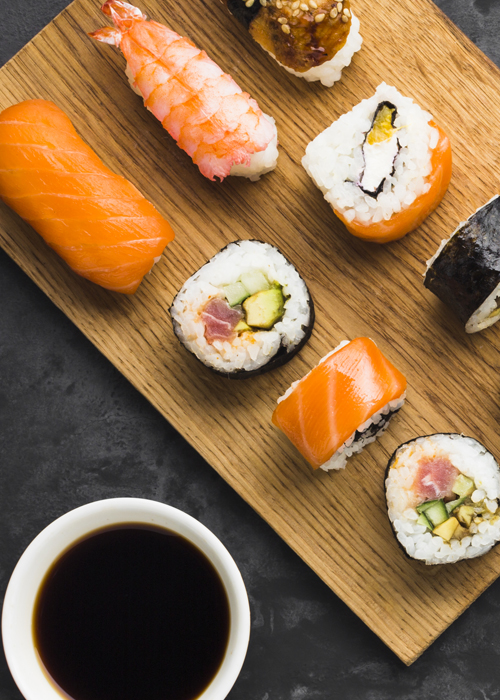Sushi and sashimi:
In order to avoid risks while consuming raw fish, it is advisable to keep it for at least 48 hours in the fridge. Cooking with ham and salting: When cooking recipes with ham, fat, cold cuts, etc. It is advisable to add salt at the very end since these ingredients do already contain salt.
Bivalves:
Fresh bivalves may have sediments or sand remains so it is convenient to leave them in cold water with salt, for about 20 minutes, to be cleaned. Fresh clams are kept in the fridge in a mesh and covered with a wet kitchen cloth. Never use bivalves that have not opened after the boiling process, since they may be dead or in bad conditions.
Rice:
When cooking rice we should take into account that the required liquid should be twice the volume of the rice. If we cook dry rice, it is not advisable to use onion since it will be easier that rice overcooks.
Pulses:
Colored pulses, such as pinto beans, are better to be cooked in the same water where they have already been soaked so they do not loose color, which is why we should wash them well with tap water before soaking them. The cooking time will depend on the quantity and freshness of the pulses. If tap water at home is too hard (high lime content) may have influence when cooking pulses, so it is advisable to use mineral water. Beans, green beans and lentils are left to soak in cold water. Start boiling from cold water, I advise you to add salt to the boiling water at the very end. If more water is needed, it must be cold. Chickpeas are left to soak into tepid water with salt and they are cooked starting from boiling water. If we require more water, this must be hot.
Crystallized cod:
An easy way to crystallize cod is by inserting it in a container suitable for the oven, covered with oil and bake to 302ºF for 15 min.


